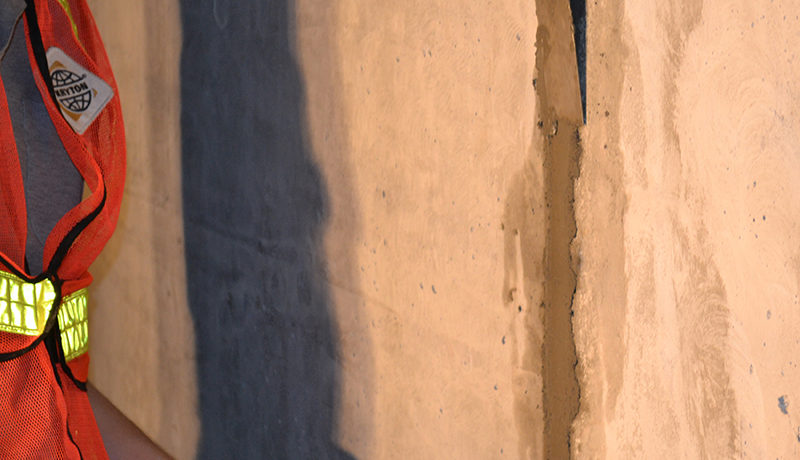Shrinking and cracking is an inevitable issue when using concrete in your construction project. A fresh concrete mix is a fluid, plastic mass that can be molded into virtually any shape. However, as the material hardens there is a reduction in volume or shrinkage. Concrete has very high compressive strength, but its tensile strength is relatively low. As concrete shrinks, tensile stress is applied to the concrete, which results in cracking.
Knowing that shrinkage and cracking are going to occur allows you to take preventative measures to control it and plan to fix them with the best product possible in the end.
Firstly, using Kryton’s Krystol Internal Membrane admixture helps to prevent the shrinkage and cracking, as well as provides a watertight seal to ensure water deterioration doesn’t occur during the lifetime of the concrete; however, some cracking is inevitable. The best way to control the cracking for good overall structural behavior is to using
control joints in predetermined locations to create weakened planes where the concrete can crack in a straight line.
Five reasons to use control joints:
- Concrete still cracks, but the absence of random cracks gives aesthetically pleasing appearance
- Concrete cracks where you want it to –easy to find cracks
- Concrete will crack in a straight line not randomly
- Fixing the cracks is made easy – especially with Kryton’s Krystol Crack Repair system.
- Overall structure becomes more durable because all cracking is accounted for.t
Typical wall sections should have a crack-control joint every 6 m (20 ft.) or less. For best results, place a crack control joint at a spacing of twenty times the wall thickness.For more information on concrete control joints, please read our Application Instructions.





